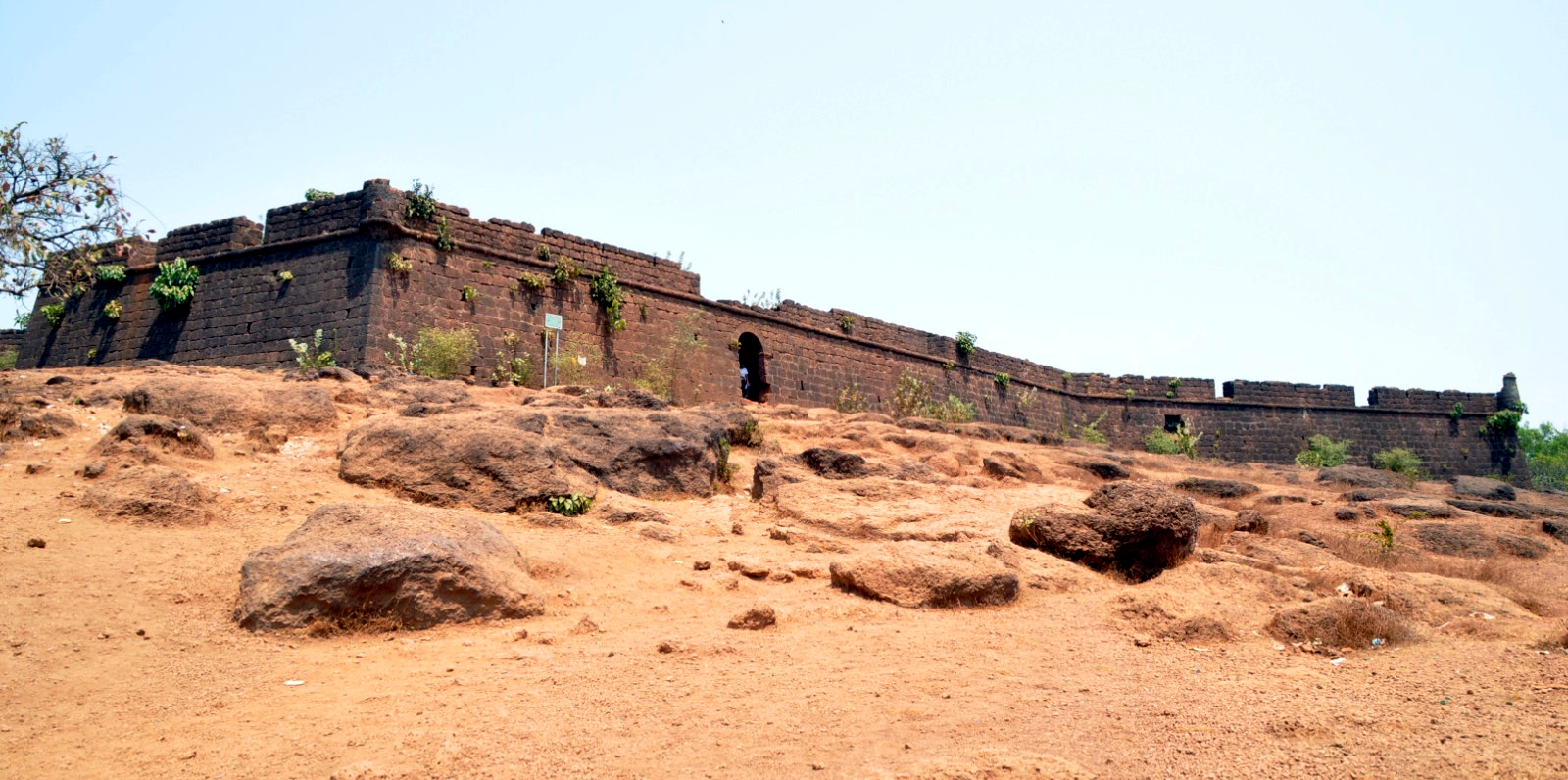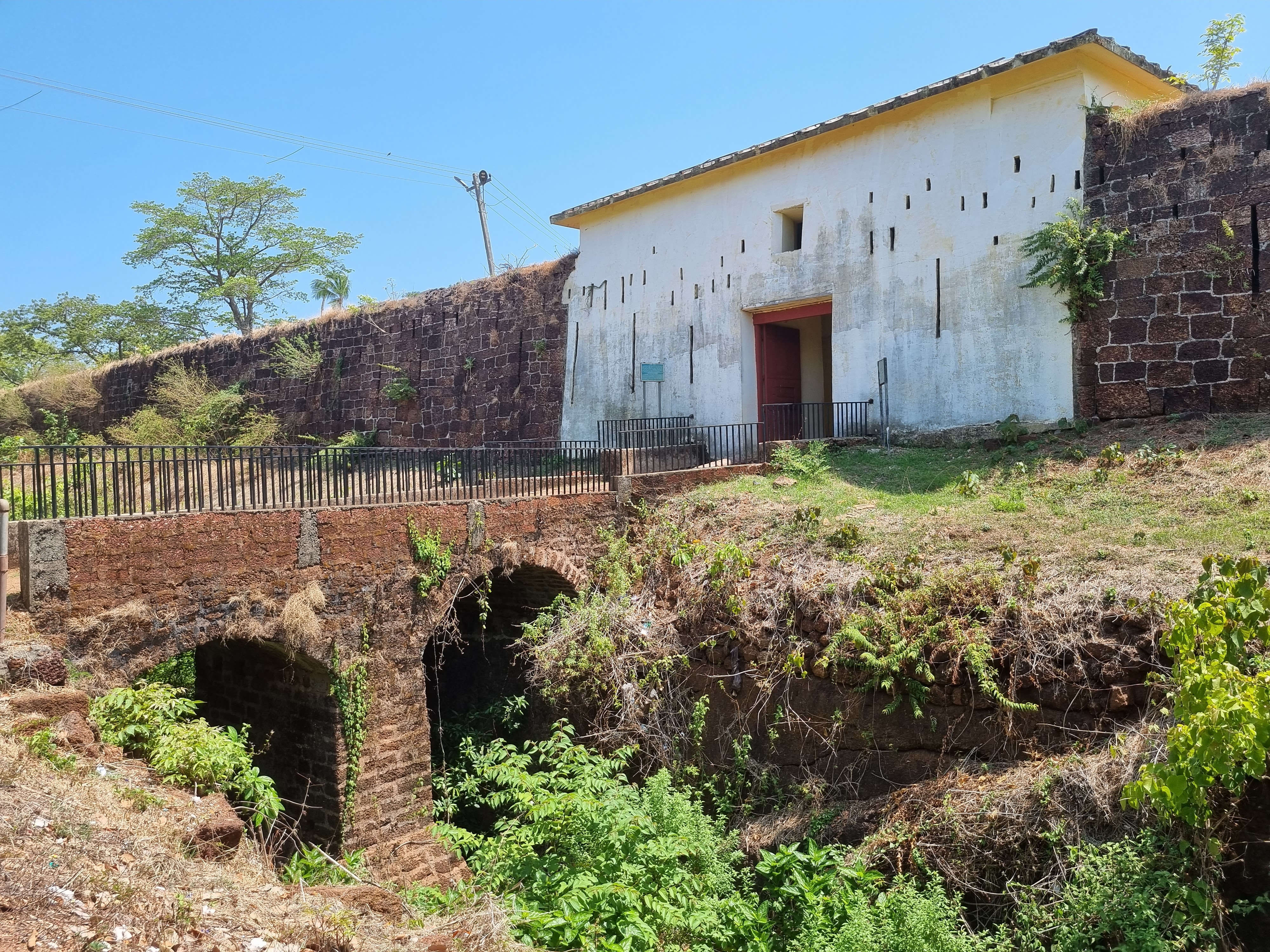GLOBAL GOAN SPEAKS

The Chapora Fort in Bardez is one of 11 monuments which will be subjected to an entrance fee.
Entry fees at 11 State protected monuments:
1. Chapora Fort
2. Fort of Alorna
5. Cabo de Rama Fort
4. Fortress of Khorjuve (Corjuem Fort)
5. Caves at Khandepar
6. Rock Carvings at Pansaimal
7. Saptakoteshwar Temple
8. Fortress of St Estevam
9. Mormugao Fort
10. Sanquelim Fort (Sankhali Fort)
11. Chapel of Our Lady of Monte
LONDON
I was “mildly pleased” to learn from ‘The Goan’ report on X that the Goa government has decided to subject 11 sites/monuments to an entrance fee. “Pleased”, only because there is a strong case for charging an entrance fee, and "mildly” only because there are mixed views and some valid concerns that locals might rightly raise that will need to be addressed.
For those who enjoy visiting monuments or places of interests, this will come with some hope that the venues will be protected, the visitor experience will be improved and their historical significance will be enhanced.
On the other hand, suspicion will be raised on some level of corruption as soon as the scheme is put in place. After all, in a society driven by poor management in these matters, any government initiative involving fees will meet with some scepticism.
THE BENEFITS
If managed successfully, the entrance fees could force the authorities to take care of the protected sites (being accountable), help maintain other places of lesser interest (shared benefits), policing of the protected area (improved security and enforced SOPs), improved public cleanliness (improved sanitisation), proper planning and visits (managed visitor numbers) and continuous improvements of good practices. All these objectives rely heavily on how the whole programme across all protected sites is collectively managed.

The Cabo de Rama Fort in Khola-Canacona is one of 11 monuments which will be subjected to an entrance fee.
Perhaps, if control was brought under the guidance of a new governing body or a Trust, assuming that one doesn’t already exist, then there may be a good chance that the objectives could be achieved by a team of both government and non-government stakeholders. Such a Trust could attract volunteers and others who could help care for the heritage sites. Revenue earned could be ploughed back into a 'places of interest' programme and benefit multiple sites just like how the ‘National Trust’ and ‘English Heritage’ organisations do in the UK. In other words, the new body could end up being a self-funded organisation.
THE CONCERNS
Ask any local Goan about these new charges and their immediate reaction will be of disdain. “Corruption comes to mind” was one’s prompt response, whilst another said, “Paying for entry to a museum/monument does not register in the mind that there should be an ongoing task of maintenance to be carried out on a regular basis. Cleanliness being one of the biggest hazards.”
Both views probably echo what most Goans would say, and which needs to be addressed – and also needs funding.
FREE ACCESS TO SITES
There are drawbacks to retaining free access to monuments and museums like the ones we have in the UK. You get what you pay for – and this literally means that the funding to improve visitor experience, developing and maintaining websites and printing good quality material is limited.
When government funding is cut, carelessness creeps into the systems and standard operating procedures (SOPs) are abandoned; to the point that the venues could be abused by the very people appointed to look after the site. One ugly situation arose in the UK where the curator of the state-supported ‘British Museum’ in London was allegedly able to smuggle out and sell priceless items on eBay, resulting in the dismissal of the offender and the resignation of a senior director of the museum.
PRICING STRUCTURES
Getting the price right, irrespective of the type of visitor (tourist or local) or groups, is of paramount importance. The Royal Observatory in Greenwich, with an exorbitant price tag of £20 makes it almost impossible for many Londoners to visit sites of significant importance in their own city. Exemption for school students and other groups can be provisioned for within the standard fee structure.
Buying a ticket, makes one qualify to be a stakeholder. If foreigners have to pay two or even three times the amount, then having some uniformity across all the venues and with packaged pricing models, visitors could purchase day passes, while locals could subscribe to longer term memberships.
Optionally entrance fee models operated in other parts of India could be studied and adopted. A closer to home experience could gained from when the ‘Dona Paula Jetty’ was opened in 2023 to the public at a ticketed price of Rs 50.
Ultimately, only time will tell if the big question on whether the new charges serve the purpose of improving visitor numbers and visitor experiences at these 11 and other sites. But to be a stakeholder in the successful retention of Goa’s heritage, everyone should try and seek involvement, consider volunteering and even buying a ticket – hoping that it will always be at an affordable price.
[The writer is a socio-economic commentator based in the UK.]